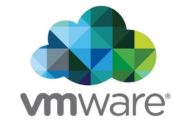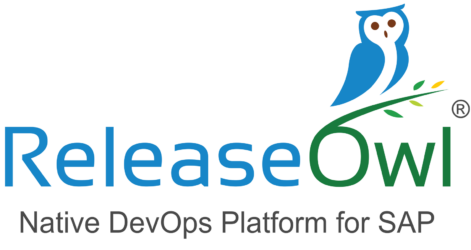SAP DMS
Filter By
Browse By
- SAP Analytics and AI
- SAP Application Development and Integration
- All SAP Application Development and Integration
- SAP ABAP
- SAP ABAP Development Tools
- SAP ABAP Test Cockpit
- SAP API Management
- SAP BAPI
- SAP Basis
- SAP BRF
- SAP Business Application Studio
- SAP CMS
- SAP Design Studio
- SAP Development Tools
- SAP DevOps
- SAP EAI
- SAP EDI
- SAP Extension Suite
- SAP Fiori
- SAP Fiori Elements
- SAP Integration Suite
- SAP Low Code Application Development
- SAP Low Code Automation
- SAP Netweaver
- SAP Release Management
- SAP UI5
- SAP Web Application Server
- SAP Web IDE
- SAP Business Process Management
- SAP Center of Excellence
- SAP CIO
- SAP Customer Experience
- SAP Data and Data Management
- All SAP Data and Data Management
- SAP BW
- SAP BW/4HANA
- SAP Crystal Reports
- SAP Data Archiving
- SAP Data Center
- SAP Data Governance
- SAP Data Integration
- SAP Data Migration
- SAP Data Quality
- SAP Data Services
- SAP Data Strategy
- SAP Data Visualization
- SAP Data Warehouse Cloud
- SAP DMS
- SAP Document Control
- SAP EIM
- SAP ETL
- SAP ETL Tools
- SAP HANA
- SAP HANA Administration
- SAP HANA Deployment Infrastructure
- SAP HANA Studio
- SAP Master Data
- SAP Master Data Governance
- SAP MDM
- SAP Enterprise Architect
- SAP Enterprise Asset Management
- SAP ERP
- SAP Finance
- All SAP Finance
- SAP Accounting
- SAP AR AP
- SAP Asset Accounting
- SAP Billing Systems
- SAP BPC
- SAP BRIM
- SAP Cash Management
- SAP Central Finance
- SAP Controlling
- SAP COPA
- SAP Cost Center Accounting
- SAP Currency Risk
- SAP e-invoicing
- SAP FICO
- SAP Finance Automation
- SAP Advanced Financial Closing
- SAP Financial Consolidation
- SAP Financial Planning
- SAP FX Risk
- SAP General Ledger
- SAP Global Tax Management
- SAP Hyperion
- SAP Order to Cash
- SAP Payment Processing
- SAP Profitability Analysis
- SAP Rebate Management
- SAP S/4HANA Finance
- SAP SWIFT Compliance
- SAP Treasury Management
- SAP Universal Journal
- SAP Governance Risk and Compliance
- SAP Human Capital Management
- SAP Intelligent Technologies
- SAP Platform and Technology
- All SAP Platform and Technology
- SAP Business Technology Platform
- SAP Cloud
- SAP Cloud Connector
- SAP Cloud Integration Platform
- SAP Cloud Migration
- SAP Cloud Platform
- SAP Cloud Providers
- SAP Cloud Strategy
- SAP Digital Signature
- SAP Container Platform
- SAP HANA Enterprise Cloud
- SAP Digital Asset Management
- SAP Smart Forms
- SAP HEC
- SAP Digital Integration Hub
- SAP Hyperscalers
- SAP Infrastructure
- SAP Messaging
- SAP Quality and Testing
- SAP Security
- SAP Spend Management
- SAP Supply Chain Management
- All SAP Supply Chain Management
- SAP APO
- SAP Asset Management
- SAP Business Network
- SAP Digital Manufacturing Cloud
- SAP Digital Twin
- SAP EWM
- SAP IBP
- SAP Inventory Management
- SAP Label Printing
- SAP Logistics
- SAP Manufacturing
- SAP Manufacturing Automation
- SAP MES
- SAP MII
- SAP MM
- SAP MRO
- SAP MRP
- SAP Order Management
- SAP Plant Maintenance
- SAP PLM
- SAP Production Planning
- SAP S&OP
- SAP SD
- SAP SPM
- SAP Supply Chain Planning
- SAP Track and Trace
- SAP Transportation Management
- SAP System Administration
What Is SAP Document Management System?
SAP Document Management System (DMS) is a cross application component that provides document and content management capabilities.
These capabilities are offered as part of SAP’s enterprise content management application, SAP Extended Enterprise Content Management by OpenText.
Several vendors provide DMS solutions that integrate with Docusign to provide document management capabilities.
Icertis offers Icertis Contract Intelligence, a contract management solution that includes a document management component.
Why Is Document Management Important?
Businesses — especially intelligent enterprises — generate significant content during the life cycle of their products. Each phase of a product’s life — from research to supply chain to sales — requires different information to be captured, managed, stored, preserved, and shared. It is important for companies to have a robust solution that can provide efficient management of this information.
Benefits of having a solution like SAP DMS include avoiding redundancy, maintaining data consistency, having an accessible search functionality, as well as version control and automatic classification capabilities.
What Is SAP Document Management System?
SAP Document Management System (DMS) is a cross application component that provides document and content management capabilities.
These capabilities are offered as part of SAP’s enterprise content management application, SAP Extended Enterprise Content Management by OpenText.
Several vendors provide DMS solutions that integrate with Docusign to provide document management capabilities.
Icertis offers Icertis Contract Intelligence, a contract management solution that includes a document management component.
Why Is Document Management Important?
Businesses — especially intelligent enterprises — generate significant content during the life cycle of their products. Each phase of a product’s life — from research to supply chain to sales — requires different information to be captured, managed, stored, preserved, and shared. It is important for companies to have a robust solution that can provide efficient management of this information.
Benefits of having a solution like SAP DMS include avoiding redundancy, maintaining data consistency, having an accessible search functionality, as well as version control and automatic classification capabilities.
DMS Key Considerations
DMS in SAP S/4HANA Cloud. According to Anupama Chandrasekhar, the author of an SAP blog post published in 2019, SAP S/4HANA Cloud provides a repository to store content. In her blog, Chandrasekhar covers SAP DMS from the perspective of SAP S/4HANA Cloud, and provides some information from an on-premise perspective.
SAP S/4HANA Cloud provides two main DMS offerings: a “Manage Documents” application and an “Attachment Service” reuse component. Chandrasekhar explains that the “Manage Documents” is a standard Fiori application within SAP S/4HANA Cloud that supports versioning. It contains machine learning-based automation for classifying documents.
The “Attachment Service” is a UI component that allows users to attach documents to a business object at the header and item level. “All leading applications (business objects) mandatorily consume this component to enable file attachments in order to ensure similar functionality and user experience across all the Fiori applications,” writes Chandrasekhar.
Integrate DMS with SAP Enterprise Portal. Karthikeyan Meganathan explains that DMS can be integrated with SAP Enterprise Portal, which can reduce the time it takes for users to access documents. Published in 2017, Meganathan’s article provides a step-by-step tutorial involving the DMS connector for Knowledge Management. The integration requires six steps:
-
- Create Knowledge Management repositories
- Create a user group
- Assign roles to the user group
- Assign users to the user group
- Assign the required users to the DMSUser group
- Open the Document Explorer, which is an iView you can access through the portal.
60 results
-

Revealing top Data Migration trends and predictions to watch
Reading time: 5 mins
Data migration is increasingly recognized as a critical strategic priority for enterprises due to the urgent need to shift from legacy systems to modern infrastructures, driven by advancements in AI, cloud computing, and real-time data processing, while facing challenges related to data integrity, security, and compliance.
-

 Premium
Premium
Improve the Flexibility of Your SAP Solution Landscape with the New Adaptive Computing Controller 7.1
Reading time: 2 mins
Adaptive computing is a virtualization approach and decouples your SAP application instances from the underlying hardware, allowing you to dynamically assign resources. If a particular server doesn’t fulfill an application’s performance requirements, the Adaptive Computing Controller (ACC) 7.1 can quickly move the instance to a more powerful server. This article describes the adaptive computing landscape,...…
-

Protect Your SAP HANA Environment: Live Q&A on Security Best Practices
Reading time: 23 mins
Rapid data center and infrastructure advancements have created endless new opportunities – especially for those who are now live on SAP HANA or SAP S/4HANA. However, now that you’re live, how do you protect your investment? Are you automating OS patch deployment and compliance across your SAP landscape? Are you looking to decrease total cost...…
-
-

- SAP Enterprise Asset Management
 Premium
Premium
Linking Operational Electricity Distribution Faults to Real-Time Repair – SCADA to SAP
Ausgrid have built a customized update function between our ADMS (SCADA System) and SAP. This has resulted in a real time solution always showing defective asset state and on-line readiness within ADMS and SAP. The outcomes include enhanced work planning and execution, improved asset utilization and greater network control. Membership Required You must be a member…
-

ScottsMiracle-Gro Cultivates Efficiency with OpenText Solutions
Reading time: 3 mins
ScottsMiracle-Gro’s digital transformation faced challenges with outdated systems, but through a pilot project using OpenText Core Content Management, they successfully migrated legal documents and automated processes, showcasing the power of cloud solutions and setting a roadmap for broader implementation.
-

 Premium
Premium
Leverage SAP EWS for Monitoring Business Process Exceptions and Deviations
Reading time: 18 mins
Learn how to use SAP Early Warning System (EWS), an alert monitoring system that informs you whenever any deviation or exception to an important business process occurs, allowing you to take timely action. Find out how to create and group exceptions and schedule analysis and see an example of EWS in action. Key Concept SAP...…
-

 Premium
Premium
Simulate Your Production and Procurement Planning with SAP LTP
Reading time: 18 mins
SAP Long-Term Planning (LTP) functionality is used to simulate various business scenarios to help in production and procurement planning using existing master data and other information. Understand the end-to-end process of running LTP and evaluating the results. Key Concept SAP Long-Term Planning (LTP) provides an interactive as well as institutive tool for business simulation. It offers...…
-
-

 Premium
Premium
How to Configure and Implement Shift Notes and Shift Reports in PP and PM: Part 2
Reading time: 12 mins
Learn how to configure and implement shift reports in your SAP system for resources, work centers, and equipment and functional locations. Review common shift report functionality, such as using digital signatures to validate and authenticate the content of shift reports, sending shift reports by email to all stakeholders, printing them out, and performing TREX-based keyword...…
-

 Premium
Premium
How a Co-Product Differs from a By-Product
Reading time: 15 mins
Understand the difference between a co-product and a by-product in production processes. Walk through both options and see the pros and cons of each. Key Concept In addition to the main material made during the production process of semi-finished or finished goods, additional products often are produced. These additionally produced materials can either be used...…
-

 Premium
Premium
Boost Your Inspections by Integrating SAP QM with Production Processes
Reading time: 17 mins
Learn to configure and implement SAP Quality Management (QM) in SAP production planning (PP) production processes. You can use QM for inspection during production, in-process inspection, and inspection of semi-finished and finished goods on a goods receipt against a production order (discrete manufacturing) or process order (process industry). Key Concept Standard solutions and configuration delivered...…
Become a Member
Unlimited access to thousands of resources for SAP-specific expertise that can only be found here.
Become a Partner
Access exclusive SAP insights, expert marketing strategies, and high-value services including research reports, webinars, and buyers' guides, all designed to boost your campaign ROI by up to 50% within the SAP ecosystem.
Upcoming Events
Related Vendors
Your request has been successfully sent


